For older people with hearing loss, the hearing aid selection can be confusing and painful, especially when they decide to shop online without the help of an ENT/dispenser/audiologist.
As a purchaser, when you are choosing a hearing aid model from a variety of suppliers, are you also confused? Today’s article will try to explain several methods on choosing hearing aid models.
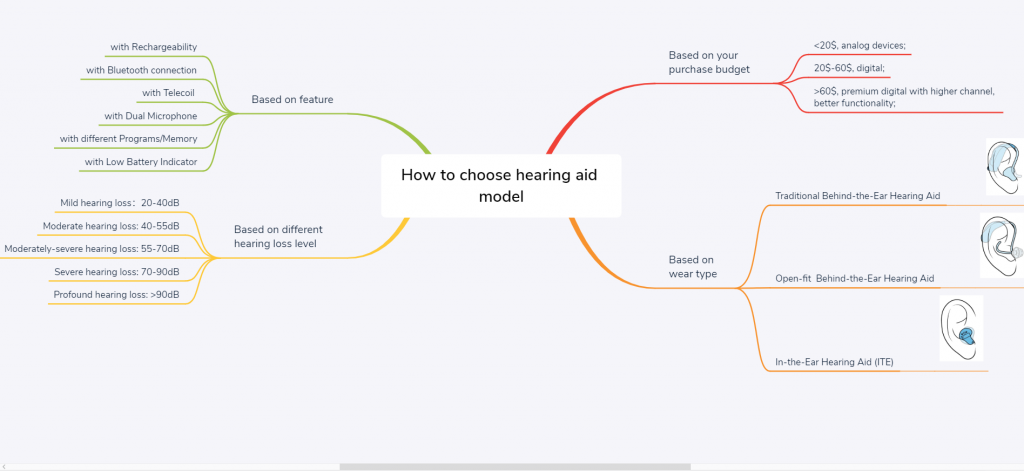
Based on your purchase budget
The most expensive component of the hearing aid is the amplifier/DSP (digital signal processor), so we can say that the budget basically limits and thus determines the amplifier/DSP.
If the purchase budget is below 20$, basically only analog hearing aids can meet the target.
For digital hearing aids, the most important thing is to choose the channel of the DSP, followed by the microphone and the receiver. Take Intricon’s chips as an example, they have 2/4/6/8/16-channel chips. The higher the channel, more expensive procurement cost, the higher the manufacturer’s factory price.
Of course, more advanced chips have more powerful functions. For example, only 4 channels or advanced more can be compatible with the Bluetooth module. 6 channels DSP have adaptive directionality, and 8 channels DSP have data logging.
Based on wear type
Traditional Behind-the-Ear Hearing Aid
Wearing behind the ear, the amplified sound is transmitted like this: the hearing aid amplifies the sound —> sound reaches the ear hook —> the thick tube connected to the ear hook transmits the sound to the user’s ear canal.
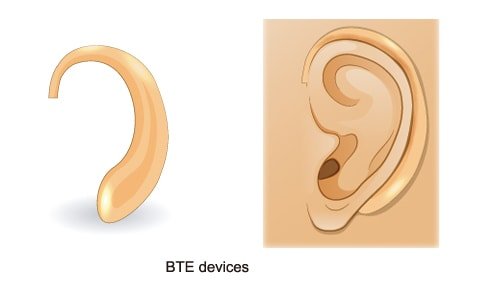
This is the traditional design on the market. The advantage is that it is more suitable for users with severe hearing loss.
Open-fit Behind-the-Ear Hearing Aid
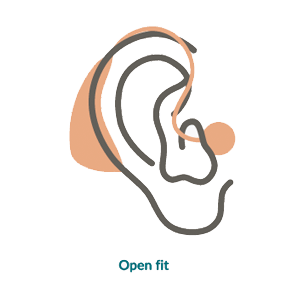
When the user wears the traditional BTE, it may cause Occlusion effect, which promotes the birth of open fit design.
In addition to reducing the blocking effect, the open fit hearing aid is light in weight and more aesthetically pleasing than the thick tube.
In-the-Ear Hearing Aid (ITE)
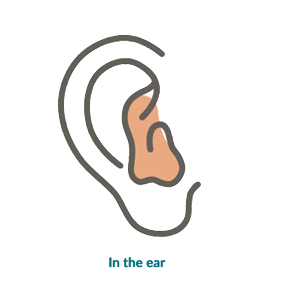
Another major category is the ear canal hearing aid, and the specific subdivision includes ITC, CIC. Compared with BTE, ITE does not require a tube, and it can be directly worn with ear dome.
–> For purchaser, you need to know that the return rate of ITE may be higher than BTE. This is the conclusion we get from majority customer’s return rate. On the one hand, each person’s ear canal is unique, so it’s more likely that users feel ITE doesn’t fit and then return; On the other hand, when the user pushes the ITE into the ear canal, usually the hearing aid has already started working so there will be squeal sound. For user who did not wear the hearing aid before, they will mistakenly thinks that this is a howling and believe the product is faulty and returned.
Based on feature
with Rechargeability
Hearing aids use zinc-air batteries for a long time, and many distributors will provide users with a free battery for one year. With rechargeable hearing aids, there is no need that users bring zinc-air batteries.
Since Phonak launched its first rechargeable hearing aid, hearing aid manufactures are constantly developing the charging technology for hearing aids. Nowadays you easily find rechargeable aids everywhere.
with Telecoil
Telecoil is an option for many modern hearing aids. Telecoil is a small sensor or copper wire placed in a hearing aid. When activated, it wirelessly picks up magnetic signals from hearing-compatible systems (such as conference rooms, concert halls, museums, and even those in subways) and converts that signal into sound.
This type of technology helps people hear by eliminating most background noise and reverberation.
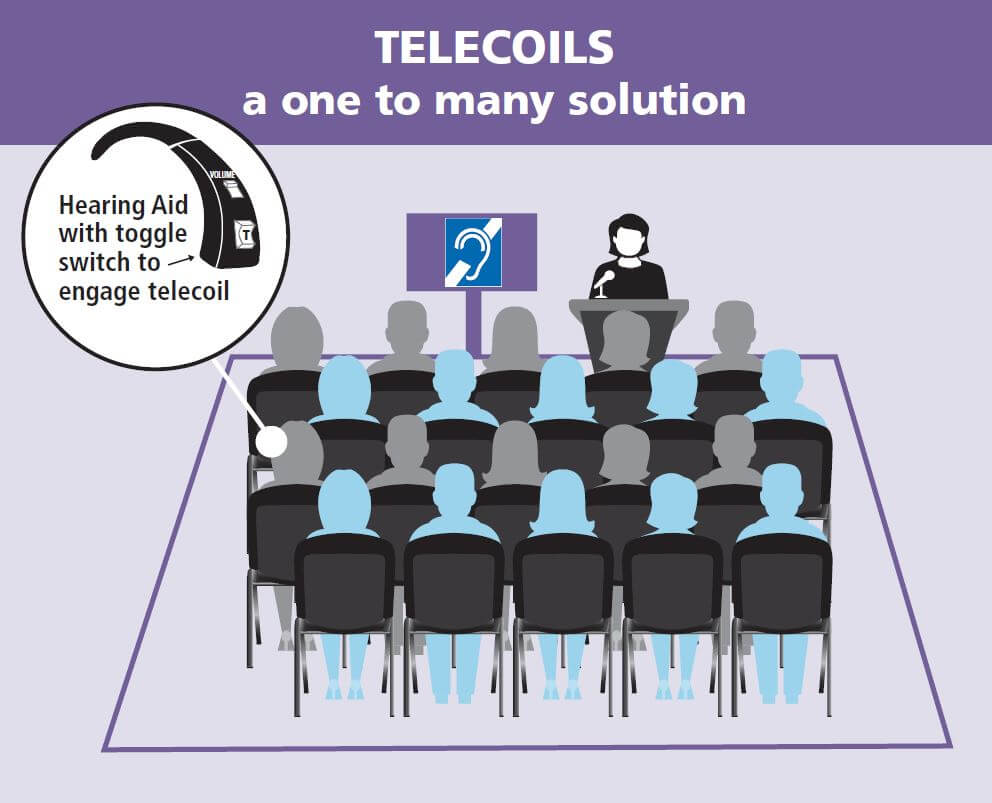
with Directional Microphone
Many modern hearing aids are equipped with a directional microphone. This technique works best when you are close to the sound source. Almost all hearing aids with this function can automatically switch between direction and omnidirectional settings depending on the environment.
with Feedback Suppression
Feedback suppression or digital feedback suppression helps eliminate high-pitched squeal.
Digital Noise Reduction (DNR)
By blocking some background noise, it makes listening and understanding speech easier.
with different Programs/Memory
People are social animals. We are always in different social life and environment. That’s why we need different programs to meet each circumstance.
For example, you may have one program for quiet environments, one for noisy environments, and one for using the telephone. You could adjust the hearing aid on your own by pressing a memory button on the hearing aid or remote control.
Most hearing aids have two or three memories.
Based on different hearing loss level
You could choose different models based on customer’s hearing loss level and match with the gain/output of hearing aids.
Mild hearing loss: 20-40dB
Moderate hearing loss 40-55dB
Moderately-severe hearing loss 55-70dB
Severe hearing loss 70-90dB
Profound hearing loss >90dB
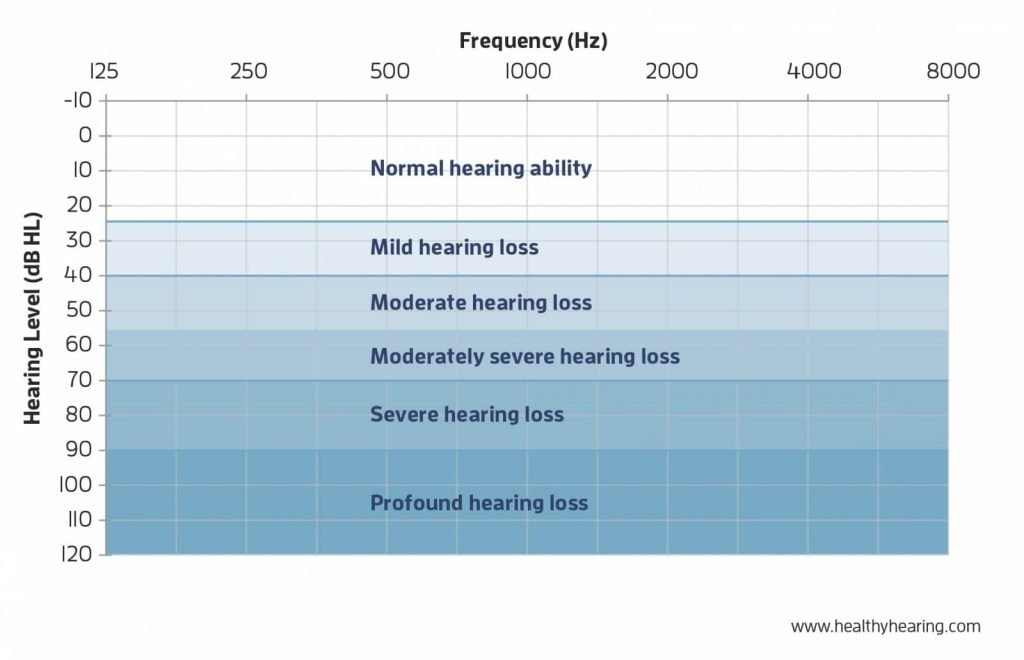
Based on your sales channel
If you offer hearing aids to customers face-to-face, programmable hearing aids will be great.
If it is online sales, you can choose hearing aids with preset programs to reduce programming troubles. For BTE think/thin tube, according to our past experience, users prefer open fit design, so try not to choose big ear hooks. Another better choice is the hearing aid with thin tube and ear hooks interchangeable. In general, the gain of the ear hook will be 5 dB higher than with the tube.
In addition, after-sales is crucial for online sales. For online sales purchaser, choose a supplier with good quality products and after-sales service eliminates your profits be consumed by returns. In the long run, although your purchasing costs go up, profits should be higher than buying cheap junky products.
If you are selling hearing aids on your clinics or store, then programmable hearing aids is perfect for you. Or you could looking for hearing aids with trimmer (H/P/L), so you could offer customized service for your patients:)
Choosing hearing aid models is not a easy job, you need to consider all factors and make the best choice. We understand that you have your own set of procurement standards, but we wish to share with you more inside info to help with your purchasing. Contact AZ Hearing, we’d love to get your feedback.
Reference:
https://www.consumerreports.org/cro/hearing-aids/buying-guide/index.htm
https://www.everydayhearing.com/hearing-aids/articles/the-ultimate-guide-buying-hearing-aids/
https://www.connecthearing.com/getattachment/b8046d8e-2870-4408-a9c1-d3532278532b/brochure.aspx
